THE EXOTIC KITCHENS OF PERU  The author (Copeland Marks) travels.
The author (Copeland Marks) travels.
THE EXOTIC
KITCHENS OF PERU
The Land of the Inca Copeland Marks

Copyright 1999 by Copeland Marks All rights reserved. No part of this book may be reproduced or transmitted in any form or by any means without the written permission of the publisher. ISBN 978-0-87131-957-9 Published by M. Evans
An imprint of The Rowman & Littlefield Publishing Group, Inc.
4501 Forbes Boulevard, Suite 200, Lanham, Maryland 20706 Distributed by NATIONAL BOOK NETWORK Designed and typeset by Annemarie Redmond Manufactured in the United States of America
CONTENTS

ACKNOWLEDGMENTS
Peru is the third largest country in South America, with abrupt changes in altitude, temperature, rainfall, and all the other physical attributes of a mountainous country. My culinary research, for example, took me from the tropical Amazon region to the brisk altitude of Cuzco (at 10,000 feet elevation) in an hour.
Wherever I traveled, cooked, tasted, and recorded, the people of Peru in all of the regions were with me, assisting my project. For this I thank them all and record below the names of the many people who offered me the knowledge of their traditions, sources of inspiration, and cookstove: Chef Ramiro VasquezLima
Isabel AlvarezLima
Marleny Garcia CamposTrujillo
Luis SanezTrujillo
Leonor Rivera de SotoTrujillo
Luis Alvarez GarciaHuanchaco
Aldo Ganoza CarbajalHuanchaco
Florencia Lopez Galvez, Circuito del PatoTrujillo
Lidia Jaime AraujoLambayeque
Isabel Arauja JaimeLambayeque
Monica Monsalve PuenteLambayeque
Isabel SenadorChiclayo
Esther Curto CordovaIquitos
Rolfo Walter Sanches DavilaIquitos
Sandra Chaves HuamanIquitos
Cecilia Kalinowski VeneroCuzco
Maria Elena BarrionueroCuzco
Chef Juan Poma ArocotipaPuno
Chef Basilio Mami TintaArequipa
Irma Alpaca PolominaArequipa
Roberto OrtizArequipa
Juana Gamiro BelledoArequipa
Charles Stone, Editor, Rumbos MagazineLima My special saludos to Ambassador Carlos M. Gamarra Mujica, Consulate General of Peru, Paterson, N.J., and Ana Iglesias whose assistance has been extremely valuable. Also, Consul General Fernando Rojas, Consulate General of Peru, New York, and the admirable Lola Salas who gave me invaluable information for my trip to Peru and afterward. Aero Peru outlined my itinerary to Peru and assisted me within the country. Special mention must be made to Gail Martin of the Gail Martin Gallery, New York, who gave me spectacular slides of the famous antique Peruvian textiles for reproduction in this book.
I appreciate the Americas Society, Park Avenue, New York, for the generous use of their library. Special mention must be accorded in the New York area to Chef Rodolfo Islas whose knowledge of Callao, Port of Lima, was impressive. Rita Escate Torres helped me considerably with the foods of the Negro community in Chincha. Victor Yamashiro, Peruvian Family Restaurant, Passaic, NJ, awakened my interest in Peruvian/Japanese cooking. Norma Moromisato contributed to my knowledge of Peruvian/Japanese food. Clara Choy de Vera, Paterson, NJ, expanded my knowledge of Peruvian/Chinese cooking.
Angel Miguel Silva, Passaic, NJ, was generous with his time and effort. Important sources of supply in the United States of the unique Peruvian chili are as follows: J. Austin Kerr
Peruvian Aji Collection
P.O. Box 281525
San Francisco, CA 94128
and
Old Southwest Trading Company
P.O. Box 7545
Albuquerque, NM 87194 In addition, there are a number of small Peruvian groceries in the New York/New Jersey area, where a variety of Peruvian foods can be found. My thanks to Jorge Reinoso, Director, Centro de Investigacin de Recursos Naturales y Media Ambiente, Puno-Lake Titicaca for providing statistics and other information regarding the potato.
The illustrations in this book are seventeenth century drawings by Guaman Poma de Ayala, a Peruvian prince. The original manuscript of more than 1100 pages is in the Old Royal Collection, National Library of Copenhagen, Denmark. Thanks to the National Library Cuzco, Peru for help in obtaining these drawings.
FOREWORD
After the Spanish conquest destroyed the great Inca Empire of Peru, a new cuisine
criollo developed, a subtle blending of the cooking of Spain and Peru using the ingredients of old and new worlds. Copeland Marks covers this aspect of the cuisine brilliantly and in depth but goes much further, documenting the influence of immigrants, Chinese and Italian among them, as well as those of African slaves brought in by Spain. Regional kitchens are explored and explained, and the importance of the foods that the Spanish found when Pizarro invadednotably the potato, which was cultivated in many varieties and which is of inestimable importance in the world today.
Though the capsicum family is believed to have originated in Mexico in North America, the Inca, who were among the earliest peoples to have developed agriculture, created their own capsicum varieties. One of them, Capsicum baccatum, variety pendulum Kellu-uchu, is a most brilliant yellow, an echo of the sun worship of the original Peruvians. It is extremely hot. They are believed to have invented peanut butter and corn differing from the Mexican original that gave birth to popcorn. They probably invented freeze drying, preserving the potato crop in the high Andes. It goes on and on and now, at long last, knowledge of it is available in The Exotic Kitchens of Peru brought to us by an author, Copeland Marks, who is greatly esteemed for his work on exotic and little-known kitchens throughout the world.
I am grateful to him and his publisher, George de Kay, for giving us this valuable insight into an important area of cookery. Elisabeth Lambert Ortiz, author of The Complete Book of Mexican Cooking, now in a revised edition, The Complete Book of Latin American Cooking, The Complete Book of Caribbean Cooking, and The Complete Book of Japanese Cooking. 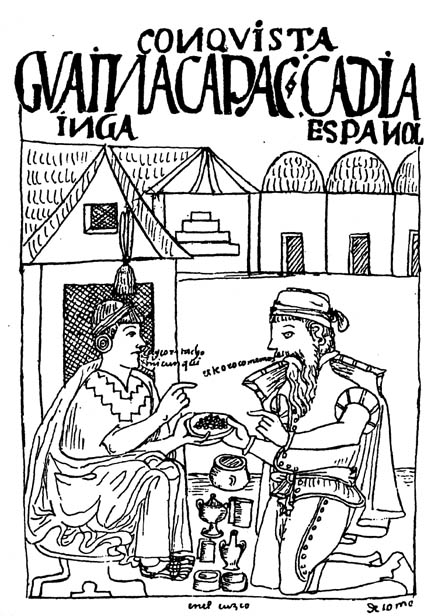
INTRODUCTION
From 1531 to 1533 the Spaniard Francisco Pizarro conquered and destroyed the great Inca Empire of Peru. It was this catastrophic disaster that launched the beginnings of the new culinary outlook in Peru, the cross-cultural exchange of the foods of Europe with what the Spanish found in the new country. In addition, it was also the beginning of the new racethe creolesthe interracial combination of the indigenous peoples of Peru and the Spanish conquerors. (One of the results was the celebrated creole
(criollo) style of cooking, in natural pottery pots over wood fires, a style that is still exemplified in the
picanterias of the city of Arequipa.) And there were other arrivals as well. (One of the results was the celebrated creole
(criollo) style of cooking, in natural pottery pots over wood fires, a style that is still exemplified in the
picanterias of the city of Arequipa.) And there were other arrivals as well.
In the middle of the nineteenth century African slaves and Chinese laborers were imported to work in agriculture and in Perus mines. The three characteristic Inca foods are
Next page

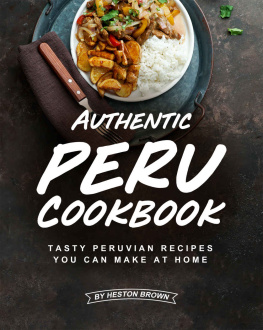
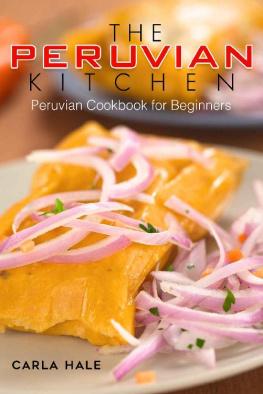
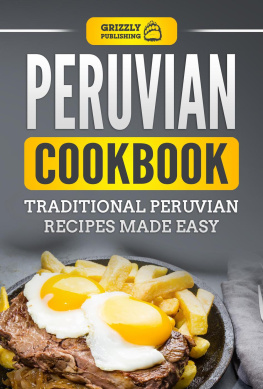
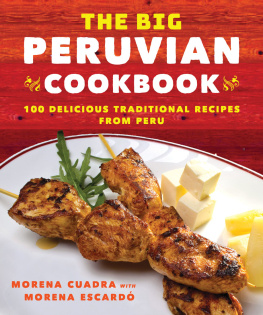
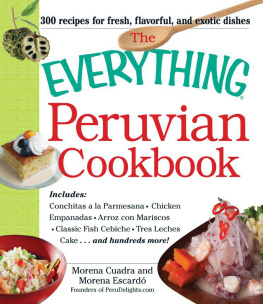
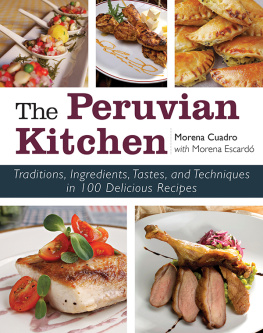

 The author (Copeland Marks) travels.
The author (Copeland Marks) travels. Copyright 1999 by Copeland Marks All rights reserved. No part of this book may be reproduced or transmitted in any form or by any means without the written permission of the publisher. ISBN 978-0-87131-957-9 Published by M. Evans
Copyright 1999 by Copeland Marks All rights reserved. No part of this book may be reproduced or transmitted in any form or by any means without the written permission of the publisher. ISBN 978-0-87131-957-9 Published by M. Evans
